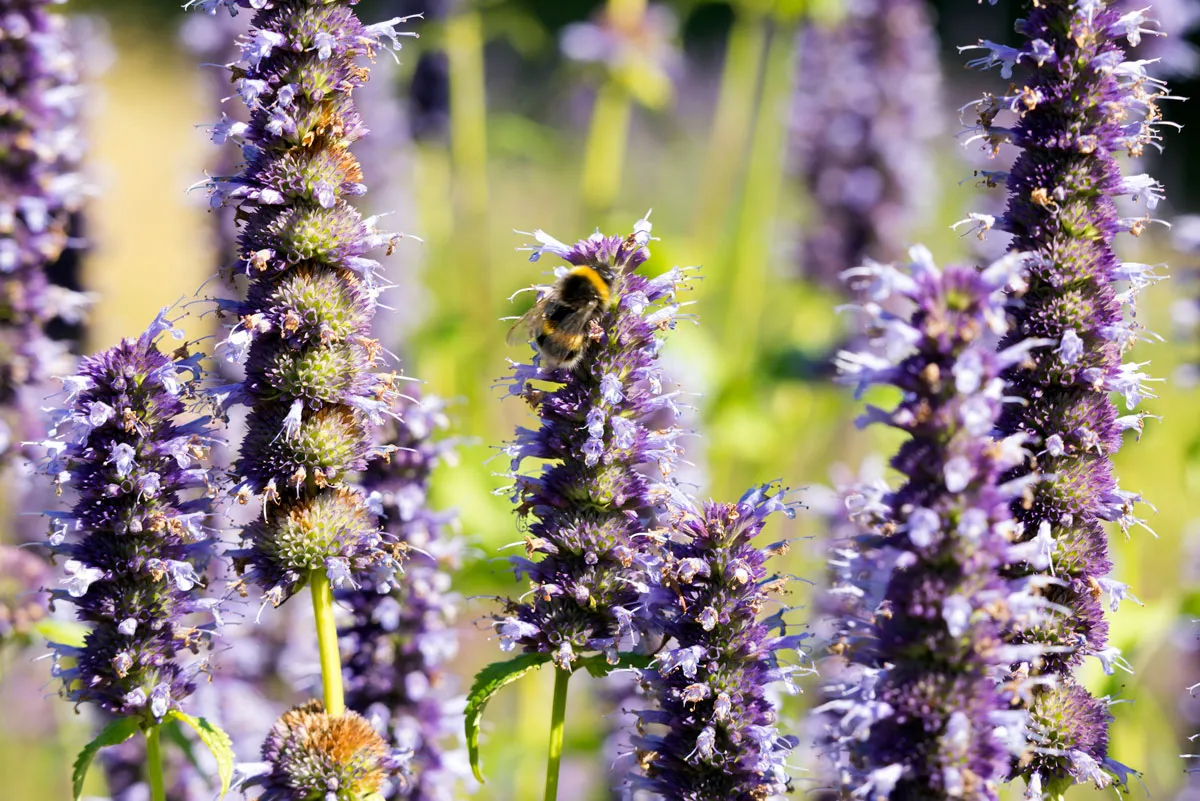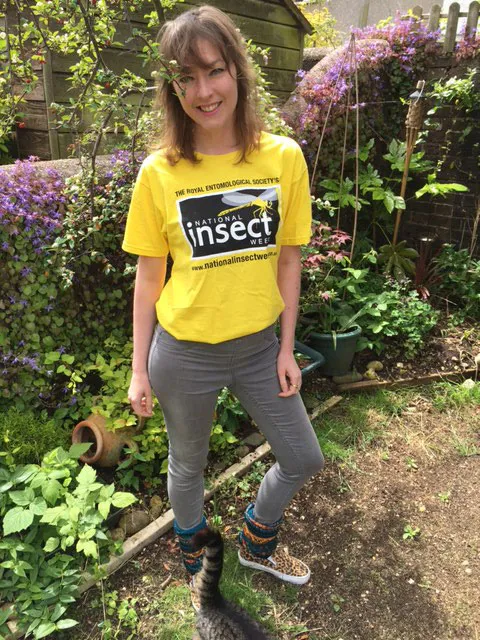Writing fictional books about beetles has meant that I’ve come to know quite a bit about insects and the essential role they play in the ecology of the planet.
This spring, keen to do as much as I can to support our invertebrate friends, my pet project is to turn my back-garden into an insect haven, building and planting friendly habitats.
In need of some expert advice, I contacted principal entomologist at RHS Garden Wisley, Dr Andrew Salisbury, who told me lots of brilliant and helpful stuff, so I’ve written an easy to achieve top tips list using his advice.
Do not use pesticides
Re-adjust your notion of a perfect garden to include a bit of plant damage. If you have aphids on your roses, you will attract a loveliness of ladybirds, lacewings and hoverflies that will gobble the aphids up.
Build a log pile at the bottom of the garden
Bury the bottom third of the log pile in the ground, for the insects that eat dead wood. You should soon see woodlice, ground beetles and if you are lucky the UK’s biggest rove beetle known as the Devils Coach Horse.
Make a compost heap
There are lots of good reasons for doing this, but you’ll also encourage heap dwellers such as springtails, rove beetles and if you’re lucky rose chafer grubs or a nesting bumblebee.

The single best thing you can do to encourage wildlife into your garden is to dig a pond. It will create a habitat for dragon and damselflies, water boatmen, pond skaters and water beetles, such as whirligigs or diving beetles, as well as providing a drink for passing wildlife such as hedgehogs or a thirsty bumblebee. If you haven’t got space for a pond, a dish of water will provide a welcome oasis to all creatures in the summer months.
Plant for pollinators
Planting – the more diverse the flowers and plants you have in your garden, the more pollinators you will attract. Bees, hoverflies and other flies visit flowers, but so do beetles, including adult soldier beetles, longhorn beetles and many more. Rosemary will attract the beautiful rosemary beetle and Mint, the native green mint beetle or non-native blue mint beetle. I’d also recommend planting to attract butterfly and moth caterpillars, and adult Lepidoptera. There are brilliant lists on the RHS website with recommended planting, but you can’t go wrong with a selection of traditional wild flowers, lavender, foxgloves, thyme and remember to leave fallen fruit on the ground for the insects to eat. You may think caterpillars are plant vandals but remember they are essential food for birds.

No garden is complete until it has a bug hotel, for those wonderful solitary bees or bugs. You’ll find these in garden centres, or there are instructions of how to make your own.
Don’t think of invertebrates as pests
Learn to live with them and take some time to appreciate the role they play in your garden. A healthy garden is buzzing with life.
Rather than an ornate outdoor room of my house, I’ve started to see my garden as a habitat for creatures. When I look out the kitchen window and see all the insects buzzing from one plant to the next I feel like a proud zoo keeper.

M.G. Leonard’s latest book, Beetle Queen, the follow up to her smash hit, Beetle Boy, is published by Chicken House on 6th April in paperback